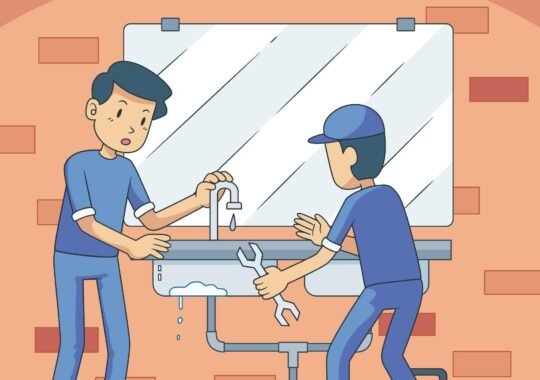Key Takeaways
- Early intervention and preventive measures significantly reduce wildlife intrusions.
- Humane removal and adherence to legal guidelines protect both homeowners and animals.
- Seasonal awareness and community cooperation significantly enhance the effectiveness of management efforts.
Table of Contents
- Understanding Common Wildlife Intruders
- Preventive Measures to Deter Wildlife
- Humane Removal Techniques
- Professional Wildlife Control Services
- Seasonal Considerations for Wildlife Management
- Legal and Ethical Considerations
- Community Involvement in Wildlife Management
- Conclusion
Unexpected wildlife encounters are a growing concern for homeowners, resulting in property damage, health risks, and stress. Wildlife, including raccoons, squirrels, bats, and rodents, can enter homes through even the smallest openings, forcing families to seek practical and safe solutions. Whether you’re dealing with a minor problem or a more serious invasion, intervention is sometimes necessary to protect your home and family.
Species often come seeking food, warmth, or shelter—particularly as urban environments expand into their natural habitats. These intrusions can disrupt your sense of safety and compromise the integrity of your property. When animals like rodents chew through electrical wiring, the risk of fire increases, underscoring the importance of swift and strategic action.
Addressing a wildlife intrusion should strike a balance between effective prevention and humane practices. In many cases, understanding the habits and motivations of these animals is the first step toward keeping both your family and local wildlife safe.
Not only does a prompt response reduce health hazards and property damage, but it also upholds your ethical and legal responsibilities as a homeowner. According to National Geographic, finding humane and sustainable solutions is essential for peaceful coexistence with local wildlife.
Understanding Common Wildlife Intruders
Household wildlife intrusions most frequently involve raccoons, squirrels, bats, and rodents. These animals are masters at exploiting structural vulnerabilities—from loose shingles to cracks near utility entrances. Raccoons and squirrels often enter attics seeking warmth, while rodents are notorious for squeezing through gaps as small as a dime. Bats tend to roost in attics or chimneys, and their droppings can become a significant health hazard.

The damage caused by these intruders isn’t limited to the physical structure. Chewed wires, soiled insulation, and contaminated food stores are only some of the risks you face without proper intervention. Awareness of these patterns can help inform and fortify your prevention strategy.
Preventive Measures to Deter Wildlife
Homeowners can take several key steps to minimize the likelihood of wildlife making their home inside yours. Prevention is always preferable to removal, and a handful of proactive habits can make a substantial difference:
- Secure Food Sources: Store pet food and bird seed indoors, and use sturdy, sealed containers for outdoor garbage. Avoid leaving scraps or food waste, which can quickly attract hungry animals.
- Seal Entry Points: Conduct regular inspections of your home to check for gaps around vents, eaves, and foundations. Repair or seal any vulnerabilities promptly.
- Maintain Landscaping: Trim branches and shrubs away from the home. Remove ground cover, woodpiles, or debris that animals may use as shelter or staging ground for entry.
Adopting these simple habits can significantly reduce the attractiveness of your property to intrusive wildlife.
Humane Removal Techniques
If wildlife does breach your defenses, humane removal is the gold standard. For handling the situation, Many local humane societies provide non-lethal removal and relocation services, ensuring both animal welfare and human safety. Their programs emphasize exclusion—physically preventing future reentry—as the ultimate long-term solution. Consulting resources like the Humane Society of the United States can provide additional guidelines on handling these situations with care and respect.
Professional Wildlife Control Services
Some situations require the expertise of professional wildlife control providers. Companies such as Pigeon and Wildlife Specialty Pest Control specialize in identifying problem areas, employing humane trapping, exclusion, and habitat modification techniques to resolve pest issues. These professionals work within established environmental best practices and legal frameworks, minimizing harm to both animals and property. Their comprehensive approach includes thorough inspections, safe removal, and follow-up prevention, providing peace of mind for homeowners who need extra support.
Seasonal Considerations for Wildlife Management
Wildlife behavior—and thus, management strategies—varies dramatically with the seasons. A seasonal approach ensures you’re targeting risk at its source, year-round:
- Spring: Look for signs of nesting, particularly in attics and crawl spaces, and seal existing cracks or holes.
- Summer: Increase landscaping efforts, removing fallen fruit, brush, and other shelter opportunities.
- Fall: Secure garbage bins and remove any harvest remnants (like pumpkins or apples) that can attract creatures stockpiling food for winter.
- Winter: Install chimney caps and cover exterior vents, as the cold often drives animals indoors.
By tailoring your efforts to the season, you can proactively minimize risks before they escalate.
Legal and Ethical Considerations
Regulations protecting wildlife differ from one locale to the next, and some species may be strictly protected. Before taking any action, research local laws to ensure compliance with the relevant regulations. Humane handling is not just good practice—it may be a legal requirement. Unauthorized trapping or relocation can result in fines or other penalties, underscoring the importance of informed and ethical intervention.
Community Involvement in Wildlife Management
Wildlife management often works best as a community initiative. Organizing neighborhood education sessions or coordinating preventive actions, such as synchronized garbage cleanups or sealing shared fences, can help amplify the impact. The collective reduction of attractants within a neighborhood creates an inhospitable environment for intruding animals, benefiting everyone involved.
Conclusion
Effective wildlife management requires ongoing vigilance, comprehensive prevention, humane intervention, and, when necessary, professional assistance. By remaining aware of seasonal shifts in animal behavior, adhering to ethical and legal standards, and collaborating with your neighbors, you can ensure that your home remains both safe for your family and respectful of local wildlife. This integrated approach not only protects your property but also contributes to broader community health and environmental sustainability.





